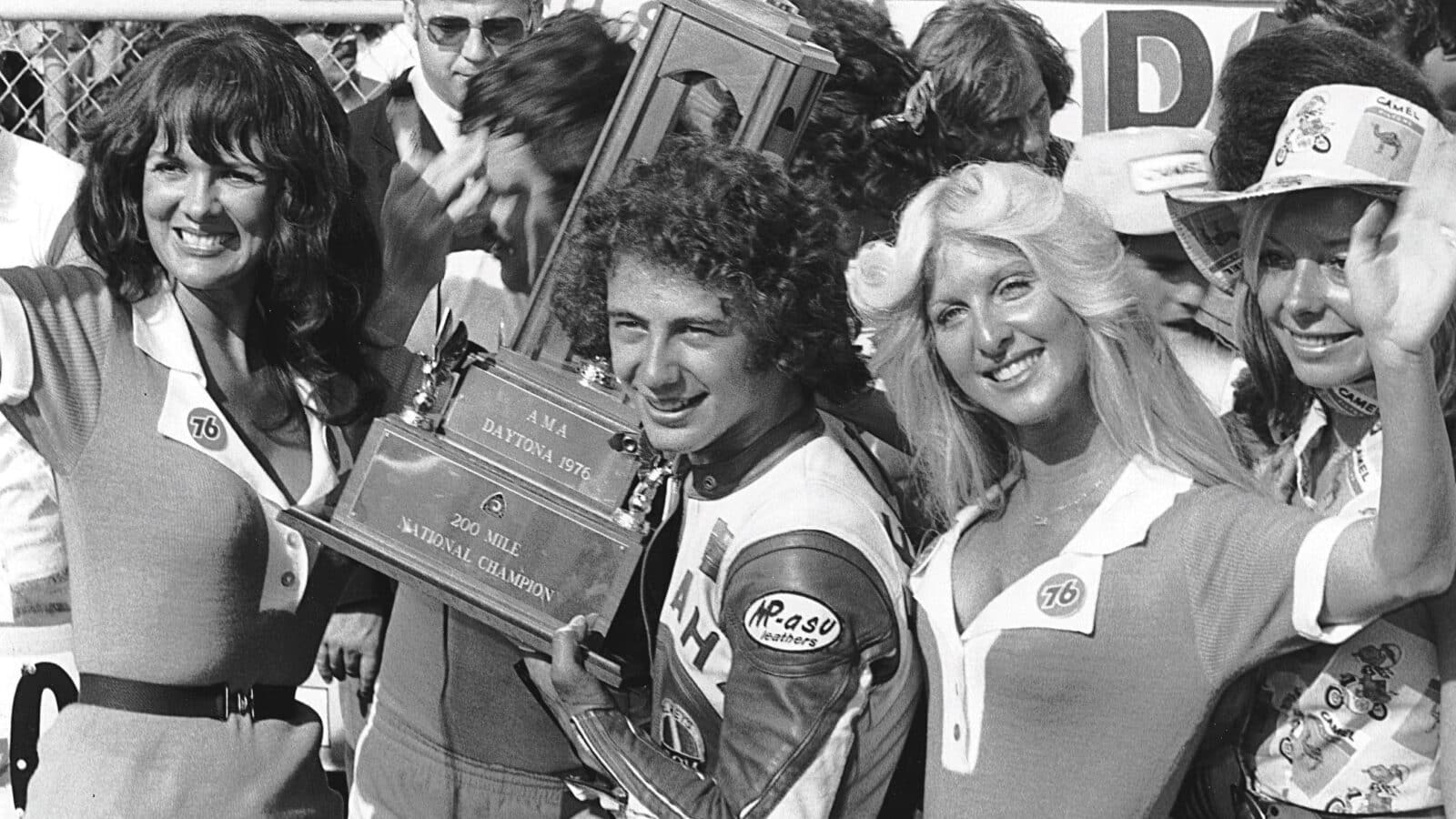Mat Oxley: When Johnny Cecotto ruled the track
Marking the 50th anniversary of Venezuelan rider Johnny Cecotto’s arrival in Europe

“It was one of the first carbon-fibre monocoques and it just exploded”
Getty Images
Many motorcycle racers move into four wheels once they’ve had enough of getting hurt by falling off two, like seven-times MotoGP king Valentino Rossi for instance, currently driving a BMW in the LMGT3 class of the World Endurance Championship. But few have made a better job of the switch than Venezuelan Johnny Cecotto, one of the great stars of 1970s motorcycle grand prix racing.
Cecotto was sublimely naturally talented. He arrived in Europe in the spring of 1975, a few weeks after his 19th birthday, planning to contest the first few grands prix and go home when the money run out.
But things didn’t quite work out like that. He won the season-opening French 250cc GP at Paul Ricard and later that day won the 350cc GP, beating reigning champion Giacomo Agostini by more than 20sec.
The paddock hardly knew what had hit it – how could a South American teenager make so many hardened GP riders look slow?
Those two victories brought in enough sponsorship for Cecotto to complete the season, which he did by winning the 350 crown, making him the sport’s youngest-ever world champion. He also took fourth in the 250 title race, despite breaking down in three GPs while leading.
Those non-finishes were a sign of things to come. His six years chasing world championship glory spanned 96 GP races, but he failed to finish 27 of those, mostly due to mechanical gremlins, and failed to start 20 through injury.
Without such appalling luck Cecotto would surely have won more than two world titles, the 1975 350cc and 1978 Formula 750. Along the way he won 14 GPs (three 500s, nine 350s and two 250s) and eight F750 races.
In 1976 he failed to retain his 350 title after three DNFs. The following year he missed much of the season through injuries received in a fatal multi-rider pile-up at Salzburgring.
“It was tough,” he says. “The year before two guys were killed at Mugello, so it wasn’t unusual. It happened many times. OK, you thought about it but you didn’t think about it too much.”
The closest Cecotto came to wining the premier 500cc title was in 1978, when he finished third behind Barry Sheene and winner ‘King’ Kenny Roberts. He didn’t get the chance to better that because he lost much of 1979 through more injuries.
Despite everything, he had a lot of fun along the way. Cecotto was part of the paddock’s coolest gang, with Sheene and Italian Marco Lucchinelli.
“They were very good times, we had a lot of fun, it was fantastic – completely different to racing now,” he smiles. “Barry and I often travelled together and did many crazy things, especially against Agostini. He wasn’t very happy with us!
“He was older than us and we did stupid things to him that he didn’t like. I remember once in a discotheque in Imatra [home of the Finnish GP], me and Barry soaked him in water – he didn’t like it.”
Cecotto began his move into car racing in 1980. “After all this shit and problems and injuries maybe it was time to change. My aim was to arrive in Formula 1, so I couldn’t wait too long. In 1980 I did the motorbike GP at Zolder [Belgium] and the weekend after I did F2 there. It was so funny because in a car the track was completely different – I didn’t even recognise it from bikes!”
Cecotto got his first F1 drive in 1983 with Theodore, scoring points in his second race. In 1984 he moved to Toleman, alongside rookie Ayrton Senna.
“I signed after Ayrton and he had signed as Toleman’s number one driver. He had a new fuel-injected engine and I had the 1983 engine. The difference was huge, but I didn’t care so much about ’84 because I had some very good possibilities for ’85 with Brabham, McLaren, Williams and Ferrari.”
The South Americans got on well until they went testing at Donington Park.
“There was only one car, so he drove, then me, then him, changing many times. At the end of the day I was a little bit faster than him, so that was the end of our friendship.”
Cecotto’s F1 dream ended during practice for the 1984 British GP at Brands Hatch, where Toleman had just finished building him a new car.
“It was one of the first carbon-fibre monocoques and it just exploded”
“On my second lap something happened with the rear suspension – the car turned left, into the Armco. It was one of the first carbon-fibre monocoques and it just exploded. I ended up in the middle of the track, almost sitting on the asphalt. Both my legs were completely destroyed, so that was the end of my F1 career. Since that day I have a lot of pain, even now.”
Multiple surgeries followed and he returned to racing, but his legs were too messed-up for single-seaters. Over the next decade and a half he enjoyed numerous touring car and GT successes, including victories in the Spa-Francorchamps and Nürburgring 24-hour races.
“When I was young I enjoyed motorbikes but after that I enjoyed cars very much too,” he says.
